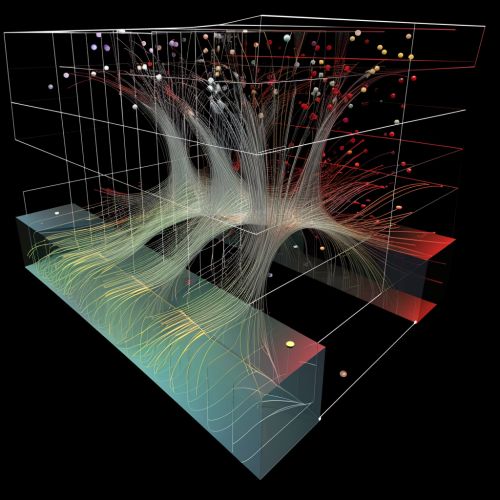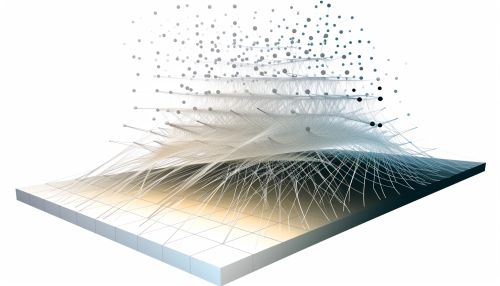Principal Bundle
Introduction
In the field of mathematics, particularly in topology and differential geometry, a Principal Bundle is a mathematical construct that formalizes the concept of a parameterized family of geometric objects. It is a fundamental concept in the study of fibre bundles, gauge theories, and quantum field theory.


Definition
Formally, a principal bundle is a triple (P, G, π), where P is a topological space known as the total space, G is a topological group known as the structure group, and π is a continuous surjection from P onto a topological space B known as the base space. The inverse image of each point in B under π is a copy of G, and these copies are called the fibers of the bundle.
Structure Group
The structure group G of a principal bundle is a topological group that acts on the fibers of the bundle. This action is required to be free and transitive, meaning that for each point in a fiber, there is exactly one group element that sends it to any other point in the same fiber. The structure group encodes the symmetries of the fibers and plays a crucial role in the classification of principal bundles.
Transition Functions
Given a principal bundle, one can define its transition functions, which are maps from overlaps of open sets in the base space to the structure group. These transition functions satisfy a cocycle condition and provide a way of patching together local trivializations of the bundle to obtain a global structure.
Associated Bundles
Given a principal bundle and a representation of its structure group on a vector space, one can construct an associated vector bundle. This construction, known as the associated bundle construction, is a fundamental tool in the theory of principal bundles and has wide-ranging applications in differential geometry and mathematical physics.
Classification
The classification of principal bundles is a major theme in algebraic topology. By using tools such as cohomology and homotopy theory, one can obtain classification results for principal bundles over various types of base spaces. For example, the principal bundles over a compact, connected, and simply-connected manifold are classified by the second cohomology group of the base space with coefficients in the structure group.
Applications
Principal bundles have numerous applications in various areas of mathematics and physics. In differential geometry, they are used to study connections and curvature. In mathematical physics, they provide the framework for gauge theories and quantum field theory. In algebraic topology, they play a key role in the study of characteristic classes.
